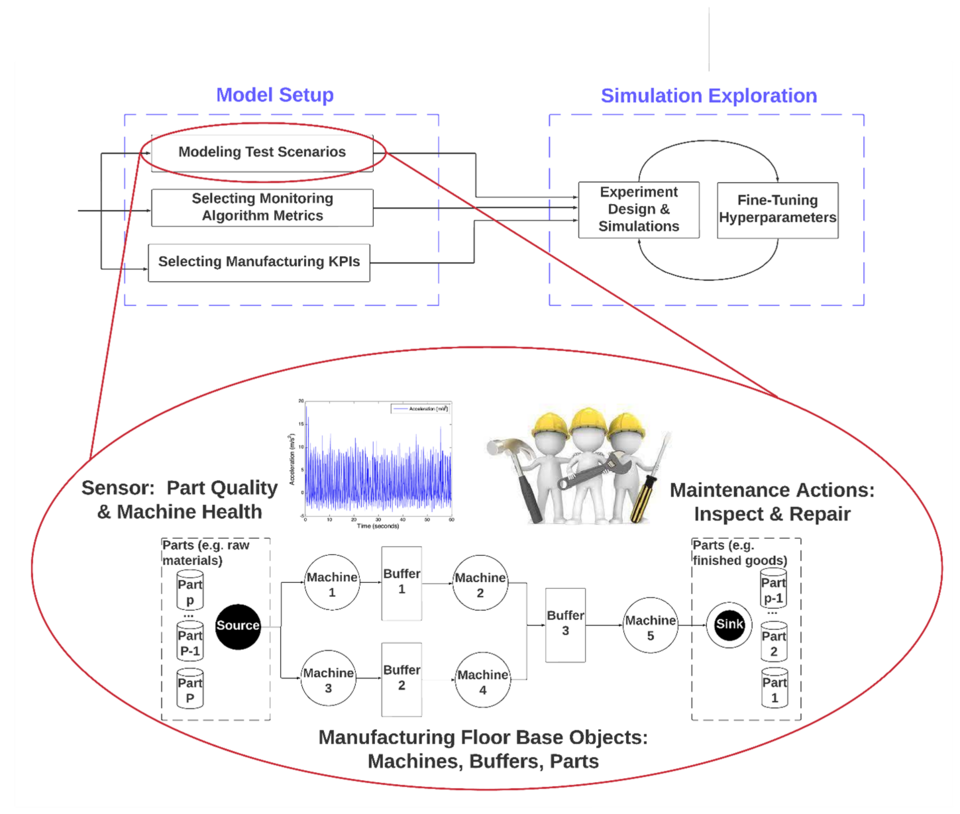NIST Researcher Presents on Use of SimPROCESD Software to Model Manufacturing Production and Maintenance

At the 2023 INFORMS Annual Meeting, NIST researcher Mehdi Dadfarnia presented research findings based on use of NIST-developed SimPROCESD software, which can model and simulate manufacturing configurations and maintenance policies for production and resource planning purposes. This conference attracts thousands of participants to showcase cutting edge research in data analytics, management science, and operations research.
The NIST software SimPROCESD is an open-source, Python-based discrete-event simulator for multistage manufacturing and equipment maintenance. The software enables users to rapidly model and simulate part production in any manufacturing configuration (that determines the flow of parts through manufacturing machinery to complete a job). The modular design of the software allows users to recreate many maintenance actions, from repairs triggered by AI-driven condition-based predictive policies to time-based inspections and run-to-fail corrective work.
Dadfarnia’s presentation focused on using SimPROCESD to compare various maintenance policies across several manufacturing key performance indicators (KPIs), including part production, machine availability, and number of repair actions. This talk presented work from a broader effort in NIST’s Industrial Artificial Intelligence Management and Metrology project, which develops domain-specific tools and methods to improve the effective use of AI systems and tools in industrial applications and to understand their financial and engineering risks and benefits.

